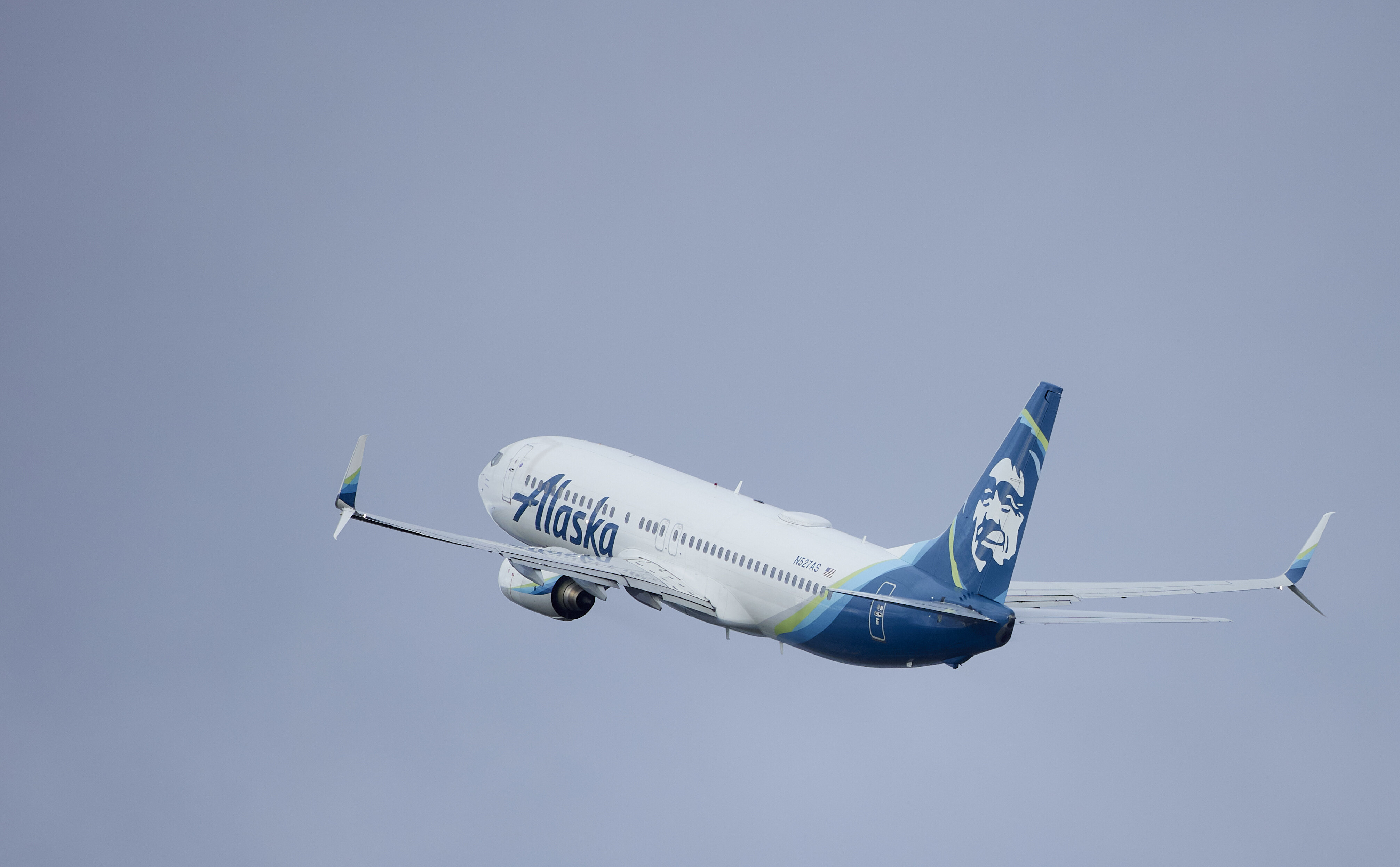Alaska flight incident reveals another feature Boeing didn’t inform pilots about - Federal investigators said that Boeing didn’t make pilots aware that when a plane rapidly depressurizes, the cockp…::undefined
Federal investigators said that Boeing didn’t make pilots aware that when a plane rapidly depressurizes, the cockpit door will fly open.
Not concerning at all, pilots aren’t important to a plane.
Yeah we don’t need them when we’ve got autopilot.
Otto!!
Kids! Be my eyes!!!
Some tech bro is training an AI pilot, I guarantee it
Just purchase it now and next year the full self flying package will be available. We’re doing it with cameras only.
That’s on a need-to-know-basis, why would pilots ever need that information? /s
I had thought that since the 2001 hijackings it has been basically impossible to open the cockpit doors during flight, except from the inside. On El Al planes I’d heard it was impossible period, so hijackers couldn’t threaten their way in, but US carriers didn’t want to do that because it means the cockpit needs its own lavatory, displacing a few passenger seats.
In the case of an explosive decompression, you can’t have that wall trying to resist the pressure difference. It’ll blow in a horrible way and probably destroy a ton of circuitry / wiring.
It needs to fail open like this, that design makes sense. The pilots should have been informed though.
An attacker could probably leverage that though to get into the cockpit.
If that design is necessary it has presumably always been like that on every pressurized plane ever built. So it shouldn’t have been a surprise. But, some vents should be able to equalize the pressure without opening the door.
ISTR hearing that El Al planes had separate entrances for the cockpit and passenger compartment so there was no way to enter or leave the cockpit except on the ground. No door, just a reinforced wall. But maybe that was a post-911 urban legend.
Aircraft maintenance has been doing the negative pressure unlock tests on cockpit doors for decades, its honestly surprising what isn’t common knowledge. Like others have said, rapid decompression of only a portion of the aircraft is very bad, and will result in massive structural failure as individual compartments aren’t pressure rated and will blow apart. The doors I’ve had experience with had large panels that would pop out when in a negative pressure event.
Interesting. Now I’m wondering if the bathroom doors also blow out if there is decompression.
Those don’t seal well, so probably not
I think my ass would be having a blow out too if that happened
But, some vents should be able to equalize the pressure without opening the door.
“some vents” are simply too small.
Then make them larger.
It’s not even technically challenging. Just a couple tubes of appropriate diameter with a dog leg in them if they’re too large. Or multiple small tubes. It’s a few psi (IIRC planes are about 10psi at altitude, approx a 7psi differential from outside at 40k ft cruise altitude) albeit a large volume. But the cockpit volume is relatively small, so doesn’t take much time to equalize, and once it starts to equize, the force from pressure drops quickly, probably non-linearly.
Decompression in planes is awfully exaggerated in movies.
The pressure difference is a lot. 7psi is a lot, 3psi is a lot. The movie exaggeration is that decompression acts like a constant vacuum. There are 500mph winds at cruise, but it’s not a constant vacuum.
This door plug that fell out is what, 6ft tall and 3ft wide? That’s 18 square feet, or (18x12x12) 2,592 square inches. At a 7psi difference, it’s holding in a force of (7 pounds per square inch X 2,592 square inches) 18,144lbs. I’d say that’s a lot. Call the cockpit door half that surface area (and underestimating here) and it still has to resist a sudden force of 9,000lbs. That’s like holding back the deadweight of two American sedans with drivers. Surface area of a vent is absolutely critical because the force of 9,000lbs on the door is so sudden, gas flow doesn’t apply in human-tangible currents. You ever get hit by a calm wave? The water doesn’t just trickle around you, it knocks you down first and flows around later. It’s a gentler force, on the order of hundreds of pounds, and has a thicker fluid, but clearly doesn’t flown like trying to hold a handful of water. Making 1/3 of the door a pop vent still leaves nearly all of the remaining 2/3 of the door under the same 7psi. It’s still going to have to resist nearly 6,000lbs instantaneously. I mean, sport parachutes have holes in them and the pressure inside is still enough to comfortably hold up a human.
The other exaggeration is that you can keep fighting after decomp. No, you pass out in a matter of seconds. They are serious when they say put your mask on before helping others because if you try to mask your panicking kid first, after 30 seconds, you’ll both be passed out. You can’t just take puffs of that mask either, it’s only enough to keep you alive, not enough to support strenuous activity.
Did you Google this, or is this your profession?
Neither. Adjacent profession and affinity for this type of math
How about we just skip the door and put up a sign that says pilots and crew only?
Better put ‘gun free zone’ on that sign, just in case
No shampoo beyond this point.
Na, many pilots are allowed to carry a gun
There are surely some vents that could handle a slower decompression, but a sudden event that reduced the pressure by half in a single second would be too much. 6 tons is a lot of force for a door to take, especially when it is in the opposite direction of most threats the door is supposed to stop.
Seems like a burst disk in the bulkheads would be a better solution than counting on a door to pop open.
Cockpits would need their own bathroom, food, and maybe sleeping area if they had no door. Can’t see that happening.
Your getting downvoted by people who’ve never flown on a 737, or even better, an MD80!
Yeah I don’t get it. Lemmy is an odd place at times.
As per pre-911 we just may need to discourage hijackers from attacking planes through other vectors, not that the TSA is an actual deterrent. It’s difficult to believe our current measures take terrorism seriously.
Guess that wasn’t good enough
In June, the FAA announced it will require a secondary barrier between the passenger cabin and cockpit of new commercial planes that are manufactured starting in the summer of 2025.
That was at the end of the article. Not sure why but that pisses me off. Probably cause it seems purely like an act based out of fear rathe than in response to any threat/weakness
Seems somebody watched Hijack on Apple TV+ and decided to draft a directive.
Removed by mod
Removed by mod
“I’m not trapped in here with you. You’re trapped in here with ME.”
I think some airlines require a pilot to switch with one of the board crew when they leave the cockpit.
Removed by mod
Subdue, while flying a plane? The only way I can picture that working is if they casually pulled out a gun and executed the other person before they realized. Pilots also have to go through a security line for employees… It’s far from impossible to get past that, but it’d take planning…
Suicide is a fixation on a method of death, then following through in the moment
US carriers didn’t want to do that because it means the cockpit needs its own lavatory, displacing a few passenger seats.
Did they say that to the FAA?
not like the Boeing 737 Max has had issues before or anything worrisome …
The article says that:
Homendy’s revelation echoes criticism heaped on Boeing during earlier probes of another in the 737 MAX line of planes, the MAX 8, in which pilots said they were not properly trained on a flight control system on board the plane that was implicated in two deadly crashes overseas. In 2020, pilots were required to undergo new simulator training and training for erroneous angle of attack sensor malfunctions as part of the plan to put the 737 MAX back into service.
training for erroneous angle of attack sensor malfunctions
the sticky note keeps falling off …
Boeing merging with McDonnald™ Douglas was a mistake.
Who in the 9/11 came up with this algorithm?
Yet another post where they tried to fit the entire article on the title
I mean I doubt Boeing knew this would happen.












